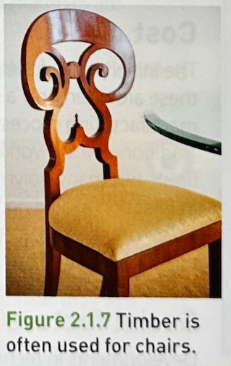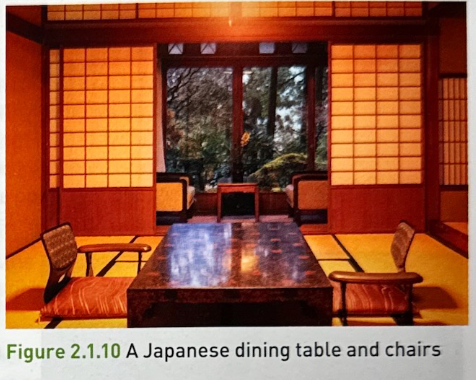3.2.1 Selection of materials or components
1/18
Earn XP
Description and Tags
Name | Mastery | Learn | Test | Matching | Spaced |
|---|
No study sessions yet.
19 Terms
Which factors should be considered when selecting materials or components?
FASECASE: functionality, aesthetics, environmental factors, availability, cost, social factors, cultural factors, ethical factors
How would functionality be considered when selecting materials or components?
Designers must ensure chosen material is fit for its purpose.
They need to understand the purpose of the end product; will the material do the job it's selected for and will it be easy to work with?
How would aesthetics be considered when selecting materials or components?
Designers need to consider Aesthetic Factors like Shape, Size, Colour, Surface finish and Texture.
It should appeal to the target market.
How would environmental factors be considered when selecting materials or components?
Designers should aim to limit the environmental impact of product.
1. Is it possible to use a sustainable material?
2. Can the materials be transported locally?
3. How easy is it to extract and transport the materials?
4. Can they be reused, recycled, biodegradeable?
How would availability be considered when selecting materials or components?
Designers must consider the availability of a material. Issues with supply can affect the price of the end-product.
Are the materials easy to source?
Are they widely available and quick to deliver?
Are they supplied in stock forms and sizes?
How would cost be considered when selecting materials or components?
selling price includes cost of raw materials, manufacturing costs, packaging, distribution and sellers' costs, percentage of total added for profit
Too cheap: no profit, too expensive: no one will buy it. some products are made for budget or 'value' markets so will use cheaper materials/manufacturing processes
demand for a product may influence its selling price
What are the benefits of bulk buying?
when materials or products are bought in large quantities, they usually cost less per unit that buying just a few. this is because the costs of setting up the manufacturing are the same no matter how many are made.
How would social factors be considered when selecting materials or components?
Designers have social responsibility to consider what impact their products may have on the environment.
Factors include:
1. Using materials from sustainable sources
2. Sourcing materials that have a positive impact on farmers and workers
3. Reducing the use of unethically sourced materials that harm the environment
4. Using recycled products
How would cultural factors be considered when selecting materials or components?
Designers should consider ideas and customs of different cultures of society.
Gender, religion, wealth affect lifestyle and choices.
Views of one culture may vary from another. This can be as simple as the choice of colour, or how the product is named or advertised.
How would ethical factors be considered when selecting materials or components?
Designers should consider needs of user; understand their requirements and make their product solve these problems.
Designers should:
1. Consider human rights
2. Make something functional, reliable and usable
3. Consider the users experience and make life better
Manufacturers should avoid unethical materials that exploit workforce or damage environment.
e.g. Stewardship Council Logo (FSC) show it comes from sustainable source, from forests.
Examples for functionality
Child toy: light, bright, acrylic better than metal
Cupboards and tables: rigid, timber
Radiators and pans: conduct heat, metal
Hardwoods are better at resisting decay
Metals corrode without coating
Polymers crack and scratch easily

Examples for aesthetics
Child toy: easily coloured, bright, polymer
Garden furniture: strong, long-lasting, metal
Chair: rigid, allows curved shapes, timber
Lampshade: attractive with and without light
Examples for environmental factors
Timber from managed forests is recycled and reused easily - renewable
Plastics reused and recycled easily
Reusing plastic, metal and glass
Use of energy
Easily repaired - less made
Where it’s used - location
Good quality materials extend the product’s life
Examples for availability
Different trees grow at different speeds
Natural events change availability - e.g. volcanoes, hurricanes
Bespoke is less available than other types of production
Examples for cost
The initial price of raw materials affects the end price
Complex manufacturing processes and finishes increase prices significantly
Traditional woodworking skills cost more as time-consuming and need a finish
Most polymers are self-finishing, take less time, cheaper
Materials need to be appropriate
Examples for social factors
Computers and robots allow products to be made quicker, cheaper and more accurate
Many people in poverty: can’t afford the best quality
Elderly people may struggle with certain products
Examples for cultural factors
Colour and decoration may be unique
e.g. Japanese people eat on the floor, different furniture needed
Gender can affect style, colour and design

Examples for ethical factors
Cheap labour leads to pollution and exploitation
Deforestation leads to global warming which causes extinction
Ethically sourced timbers reduce environmental damage
Worker protection is ethical
Correct disposal is important
Analyse and evaluate how aesthetics are considered in the design of the modern vacuum cleaners shown in the photo. (4)